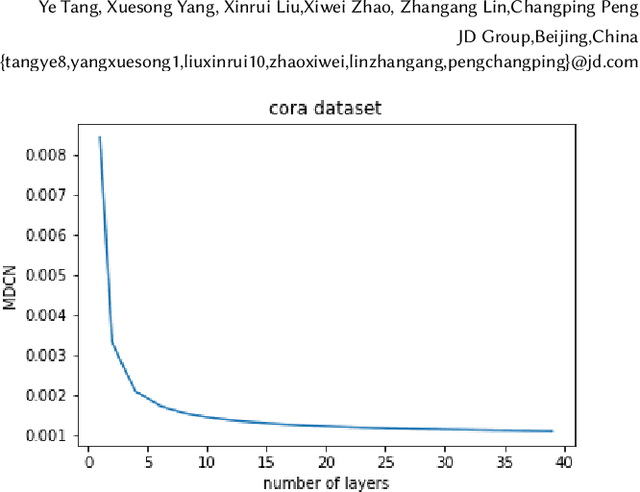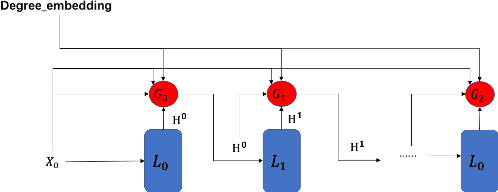Xinrui Liu
NDGGNET-A Node Independent Gate based Graph Neural Networks
May 11, 2022



Abstract:Graph Neural Networks (GNNs) is an architecture for structural data, and has been adopted in a mass of tasks and achieved fabulous results, such as link prediction, node classification, graph classification and so on. Generally, for a certain node in a given graph, a traditional GNN layer can be regarded as an aggregation from one-hop neighbors, thus a set of stacked layers are able to fetch and update node status within multi-hops. For nodes with sparse connectivity, it is difficult to obtain enough information through a single GNN layer as not only there are only few nodes directly connected to them but also can not propagate the high-order neighbor information. However, as the number of layer increases, the GNN model is prone to over-smooth for nodes with the dense connectivity, which resulting in the decrease of accuracy. To tackle this issue, in this thesis, we define a novel framework that allows the normal GNN model to accommodate more layers. Specifically, a node-degree based gate is employed to adjust weight of layers dynamically, that try to enhance the information aggregation ability and reduce the probability of over-smoothing. Experimental results show that our proposed model can effectively increase the model depth and perform well on several datasets.
Mission schedule of agile satellites based on Proximal Policy Optimization Algorithm
Jul 05, 2020



Abstract:Mission schedule of satellites is an important part of space operation nowadays, since the number and types of satellites in orbit are increasing tremendously and their corresponding tasks are also becoming more and more complicated. In this paper, a mission schedule model combined with Proximal Policy Optimization Algorithm(PPO) is proposed. Different from the traditional heuristic planning method, this paper incorporate reinforcement learning algorithms into it and find a new way to describe the problem. Several constraints including data download are considered in this paper.
 Add to Chrome
Add to Chrome Add to Firefox
Add to Firefox Add to Edge
Add to Edge